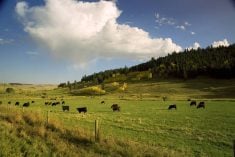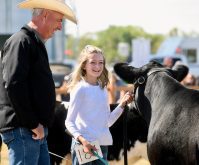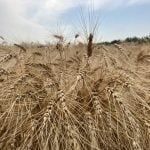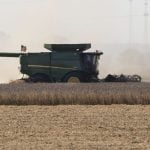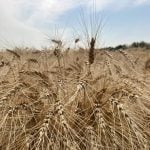Last year ended on a very difficult note. The Canadian cattle community lost a tremendous leader, mentor and friend, with the sudden passing of Reg Schellenberg, president of the Canadian Cattle Association (CCA).
Reg’s leadership and passion for our industry will be missed around the board table and at industry meetings and events. He cared about issues and worked hard for the betterment of our industry. His goal was to leave a vibrant industry for generations to come. His legacy and contributions will be felt for many years.
I chatted daily with Reg about CCA priorities and life on our home operations. I learned a lot from Reg, and his gentle demeanour and strong character are qualities that I admired. I never imagined that this is how I would become CCA president. But I share the same passion as Reg for our cattle industry and it is an honour for me to lead an organization with such a strong and rich history. It’s important to me and our entire board that we move forward on the important work that CCA undertakes on behalf of cattle producers across Canada. We will be a strong voice on the issues that matter the most. Our board members and staff are committed to making positive things happen for our industry.
Read Also

The Canadian Cattle Association’s international advocacy efforts
Global ag policies affect Canadian food policy, so the Canadian Cattle Association participates in international and domestic forums
As we move into 2023, there are bright spots for our industry. We are experiencing high calf prices and we have a strong trade position with exports of Canadian beef at record levels for the sixth year in a row. The challenge now is having enough beef to meet the demand. Simply put: the world needs more Canadian beef.
Last November saw the announcement of the Indo-Pacific Strategy, which is good news for the Canadian beef industry. It prioritizes trade and agriculture and includes key recommendations shared by CCA. The investment in minister-led trade missions will help facilitate long-term trade and investment opportunities, while the opening of an agricultural office in the region will help prevent and resolve non-tariff barriers proactively and quickly.
The Indo-Pacific region holds the greatest potential for market growth and diversification for our indus- try, with a growing middle class, GDP and food consumption. About 20 per cent of Canada’s beef exports are destined for the Indo-Pacific market, with the top five markets being Japan, mainland China, South Korea, Vietnam and Hong Kong. Diversifying our trade supports our producers’ futures. CCA continues to collaborate with the government in seeking new market opportunities for Canadian beef in the Indo-Pacific.
The release of the next federal budget is around the corner and with the winter session of Parliament set to resume on January 30, 2023, CCA will keep up advocacy efforts on our key budget recommendations which will help ensure growth and innovation in our sector.
These recommendations include:
Foot-and-mouth vaccine bank: The threat of foot-and-mouth disease (FMD) is serious and would have devastating consequences on the Canadian beef industry and our economy. FMD is a highly contagious viral infection of cloven-hoofed animals including cattle, pigs and sheep. Canada remains FMD-free, but as an industry, we cannot be complacent.
An investment by the Canadian government in a Canadian FMD vaccine bank is critical to preventing catastrophic losses to the sector and broader Canadian economy should FMD occur in our country. The projected annual cost to maintain the vaccine bank is $3.2 million-$4 million including potency and licensing testing. The potential impact of an FMD outbreak in Canada is estimated at $50 to $60 billion. Together, with our provincial counterparts across the country, we continue to call on the federal government to invest in this critical infrastructure.
Economic resilience: Cattle farmers and ranchers need tools to help mitigate market-driven and extreme weather risks. We have recommended two actions to help foster economic resilience in our sector: funding Livestock Price Insurance (LPI) and amending the livestock tax deferral (LTD) provision under the Income Tax Act.
LPI allows cattle producers to reduce market downside for their cattle, helping manage uncertainty and risk. This is especially important for our young cattle producers who haven’t yet built equity to access loans. With lending institutions recognizing this program, it puts young people in a better position to borrow the money they need to maintain and grow their operations. The program can also be enhanced through government partnerships on the cost-sharing of premiums. This would boost enrolment levels and establish program equity with other commodities and our American counterparts. Last, we are still pushing to make this program available to more producers across Canada.
We have seen our fair share of extreme weather in recent years. Being able to access the LTD provision gives producers in designated regions who sell part of their breeding herd due to extreme weather the ability to defer a portion of those proceeds to the following year. To increase the provision’s impact, CCA recommends that producers be allowed to self-elect rather than rely on a geographic determination. This would help producers make difficult decisions during urgent times of need. We are also requesting an amendment to the definition of “breeding animals,” cited in the act, so it includes all classes of cattle.
I wish you all the best for a healthy and successful year.
Nathan Phinney is president of the Canadian Cattle Association and ranches at Sackville, N.B.



